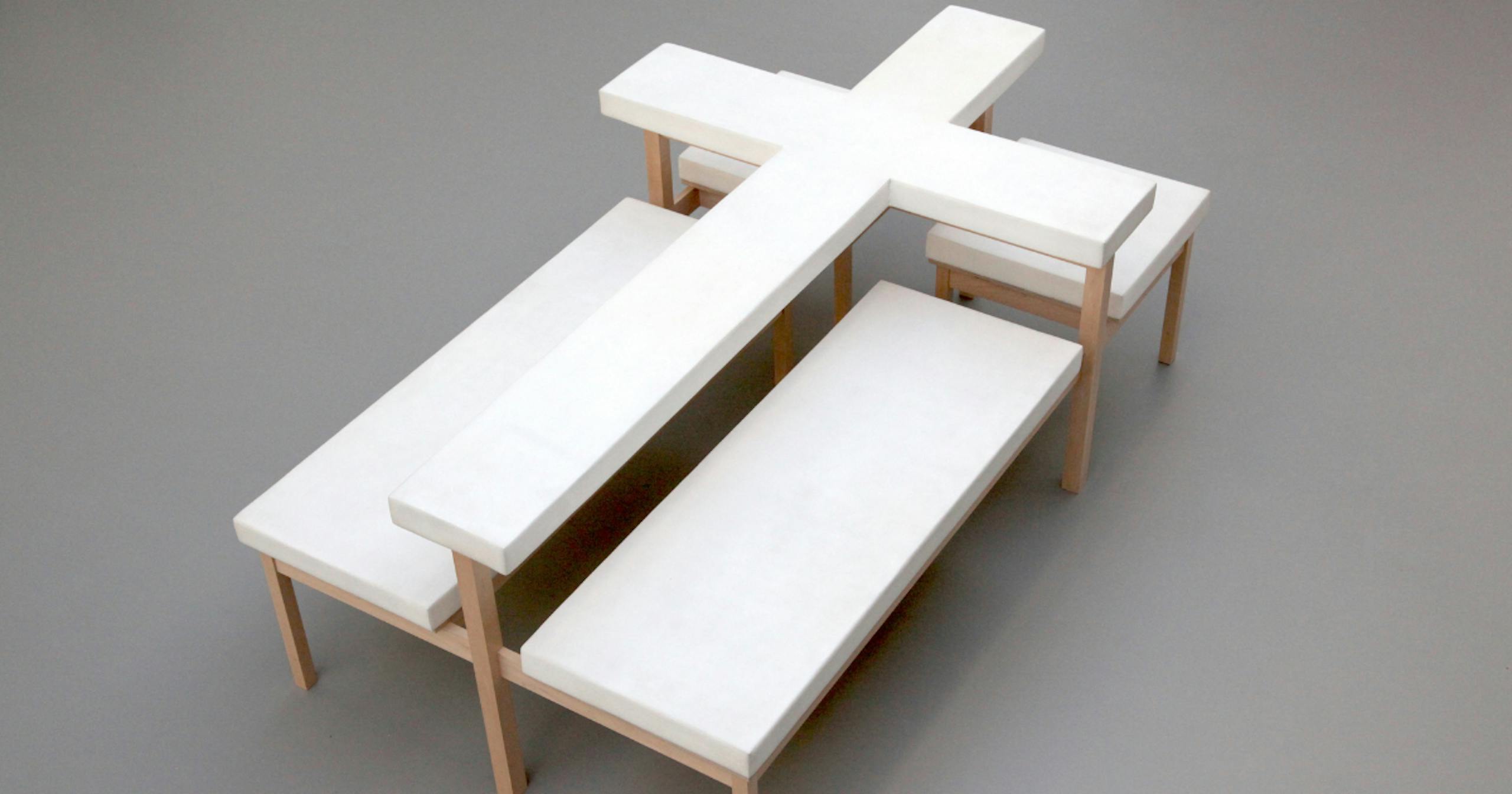

Droog30. Design or Non-design?, installation view, foto Gianluca Di Ioia
The works of the Dutch collective of variable geometry, who were forerunners in creating limited editions, which they often produced using castoff materials or by assembling repurposed scrap, all with ample quantities of irony, are celebrated in Droog30, a tribute-exhibition that embodies the “Spirit of the Nineties” while raising questions still of vital importance to contemporary design.
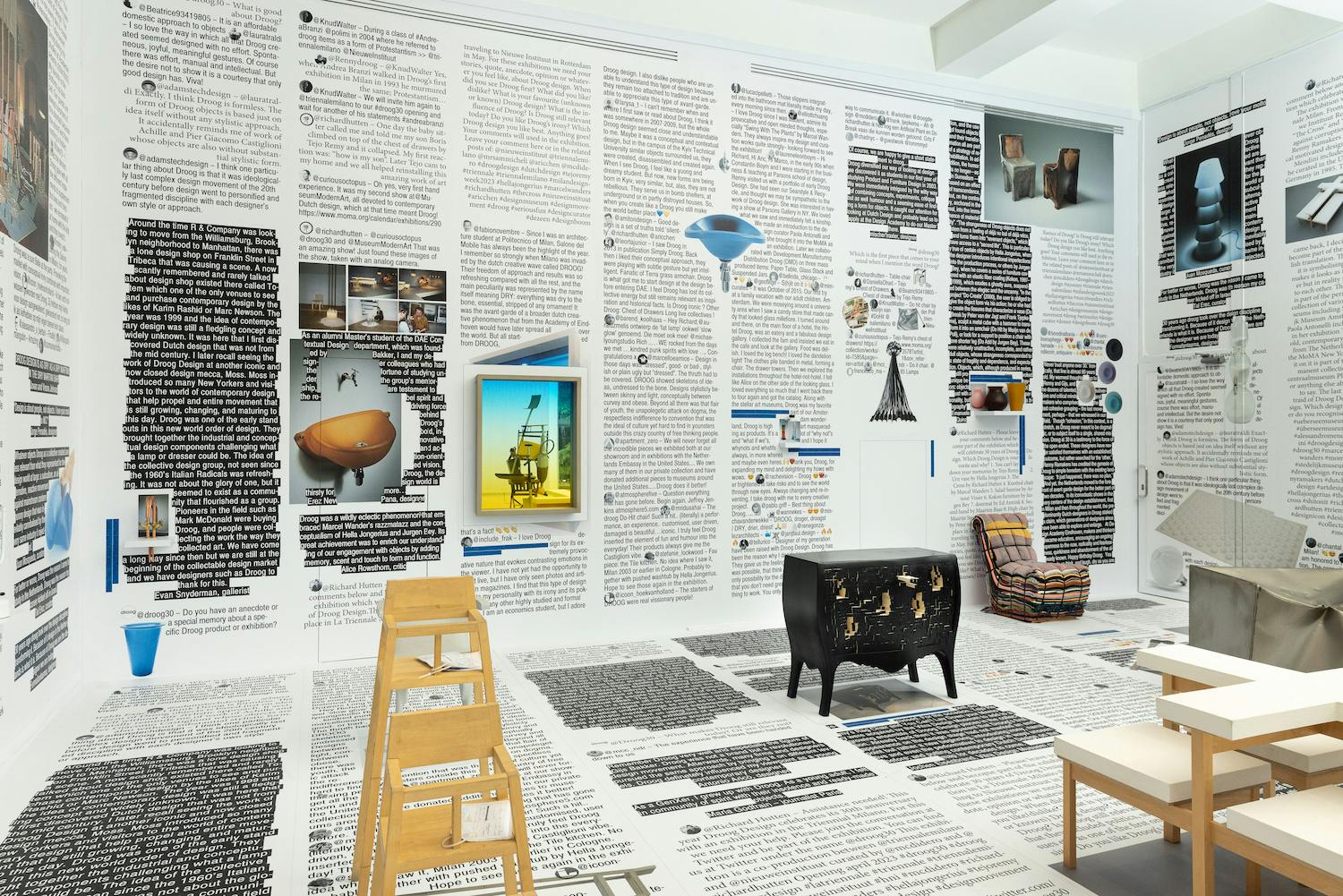
Droog30. Design or Non-design?, installation view, foto Gianluca Di Ioia
Milan, April 1993: Droog Design (in Dutch, “sparse”, “unadorned”, “direct” design) first appeared at the ‘Fuorisalone’, or Outsider Salon, as the initiative was already being called by insiders, during an exhibition organised in a flat on Via Cerva. The highlight was a series of self-manufactured pieces produced by a group of Dutch designers who had been selected by art critic Renny Ramakers and designer Gijs Bakker, and whose elemental, innovative work made an immediate impact on viewers. International recognition followed for a movement that was youthful in terms of both its history – founded only a few months earlier, it had only one noteworthy exhibition to its credit, an event held in one of the Amsterdam’s best-known music clubs – and the average age of its members, most of whom were recent university graduates only known, up until then, locally. As Paola Antonelli writes in the preface to the book Droog Design: Spirit of the Nineties (010 publishers, 1998), the creations of Droog, which “represented a subtle but potent sign of the times”, had an immediate impact on the design community. In those years, the opulence of the previous decade was giving way to a more balanced aesthetic in all creative spheres, starting with fashion, as the overabundance of the merchandise of western societies had ceased to be enchanting, instead coming to represent a cause for concern. In line with this changing outlook, the Dutch designers proposed their own version of “less is more”, combining the sparseness of their forms and the reduced quantities of the materials they employed with a surplus of concepts and an intentional stratification of their contents and messages, especially on social issues.
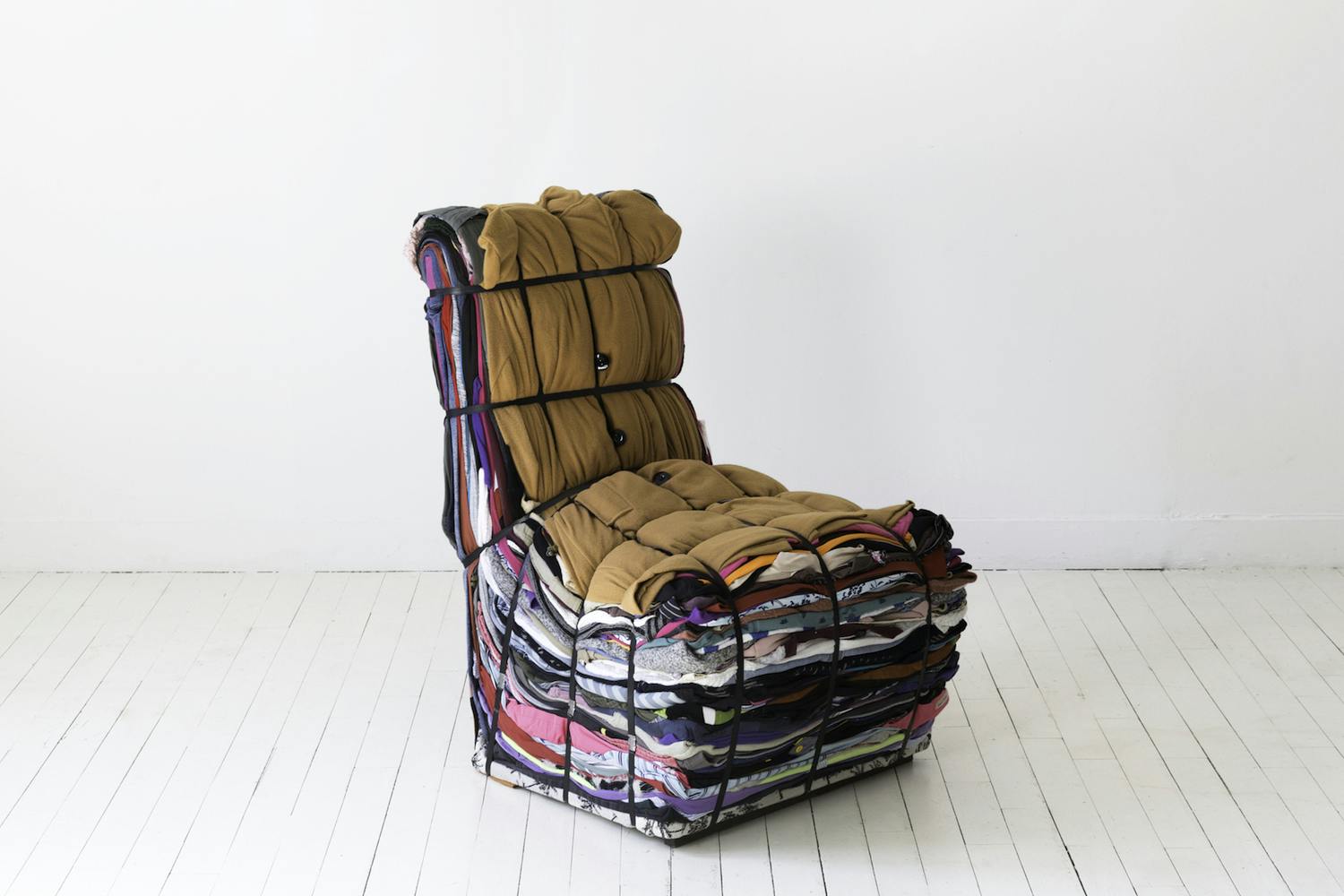
Tejo Remy, Rag Chair, photo Lisa Gaudaire
In its thirty years of history – throughout most of which the group has actively produced exhibitions and publications, plus roughly 200 objects made by approximately a hundred designers, all under the Droog Design label, whereas the focus on preserving its heritage is a recent development – the collective has often been in the forefront of developments. It pioneered limited-edition works, for example, while also perceiving the growing intermingling of design, art and craftsmanship, and this at a time when the prevailing logic still called for industrialised, serial production. Pieces such as Knotted Chair (1996) by Marcel Wanders reconcile apparently contradictory elements, including the use of advanced materials (carbon fibre coated in aramid fibre, before being stiffened with epoxy resin and hung out to dry) in combination with low-tech procedures, such as macramé. The Droog designers were also concerned early on with the environmental impact of objects and how to extend their life cycles, in addition to including considerations of recycling in their projects, by giving antiquated or worn-out objects a new lease on life. The two works Chest of Drawers - You Can’t Lay Down Your Memories and Rag Chair, both conceived of by Tejo Remy in 1991, the same year in which he graduated from the Utrecht School of Art (HKU), were made by putting together objects trouvés: in the case of the chest, twenty drawers of various shapes and sizes, along with an equal number of customised wooden containers, all stacked up and held together by a belt, while the chair consisted of a pile of coloured rags and old clothes arrayed on a wood base and held tight by steel bands. These objects have no fixed configuration, but leave it to their final users to put everything back together as many times as they wish, and in whatever way they choose (eventually adding other objects to the drawers, or including their own discarded clothes in the composition).
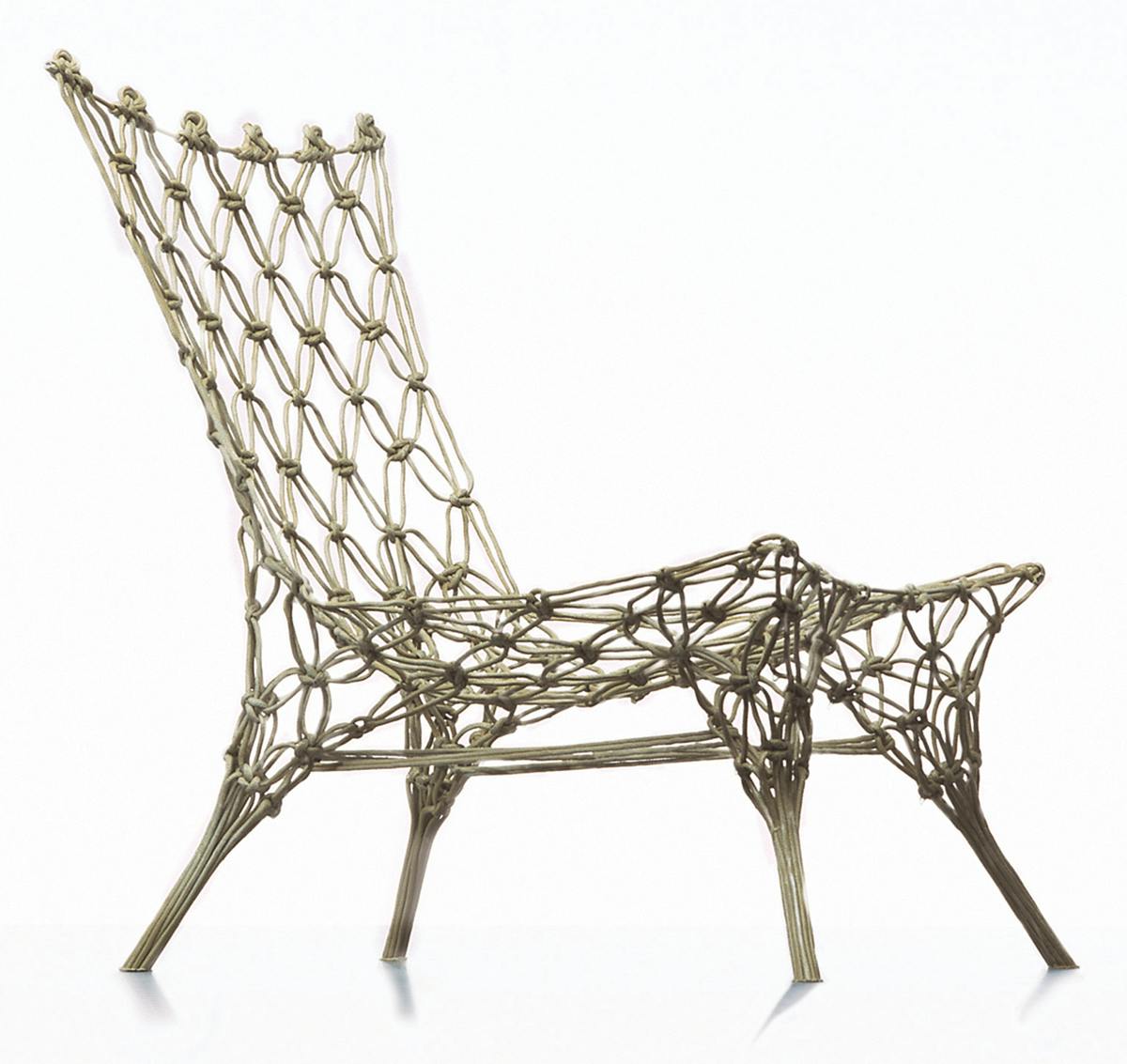
Marcel Wanders, Knotted Chair
In some cases, the viewers are called upon to handle a portion of the creative process themselves, contributing to the meaning of the end result with their efforts. The objects of the series Do Create, designed for the advertising agency KesselsKramer and unveiled at the Milan Furniture Show of 2000 before departing for a world tour that lasted a number of months, came into being as interactive works whose very existence required viewer participation. The titles themselves were calls to action: Do Hit, by Marijn Van der Poll, is an armchair that needs to be hammered into shape, starting from a cube of steel and utilising a procedure which is also designed to release stress, all with a healthy dose of irony, while Do Frame, by the Spanish designer Marti Guixé, is a vinyl adhesive tape that can be used to “frame” anything, transforming it into a work of art. And there is no saying that the involvement of human beings cannot be extended to other living creatures as well: Honeycomb Vase by Slovakian designer Tomáš Gabzdil Libertiny, who, like many of the Droog creators, attended the Design Academy of Eindhoven, was literally “co-designed by bees”, using one of the slowest prototyping techniques imaginable, as 40,000 of the insects set to work on a three-dimensional frame created by the designer, until they had built a beehive duplicating its shape.
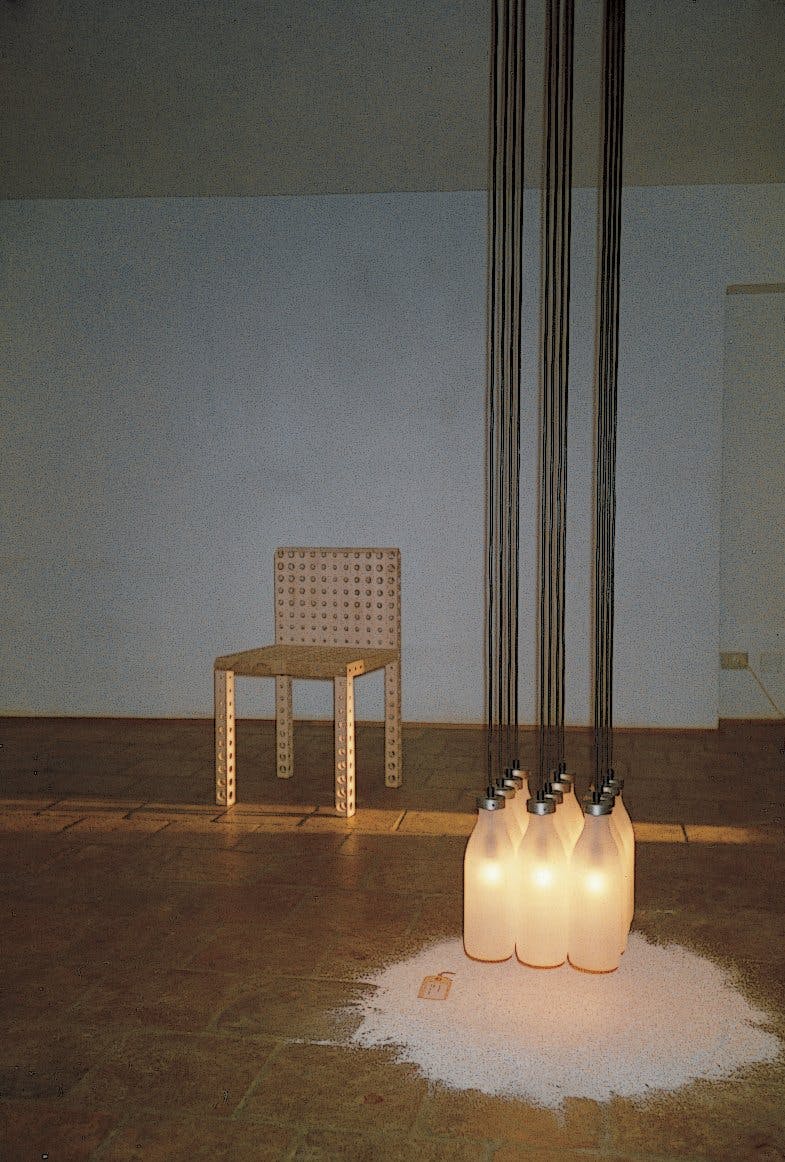
Droog Design, Presentation Milan, 1993, courtesy Droog foundation
Related events
